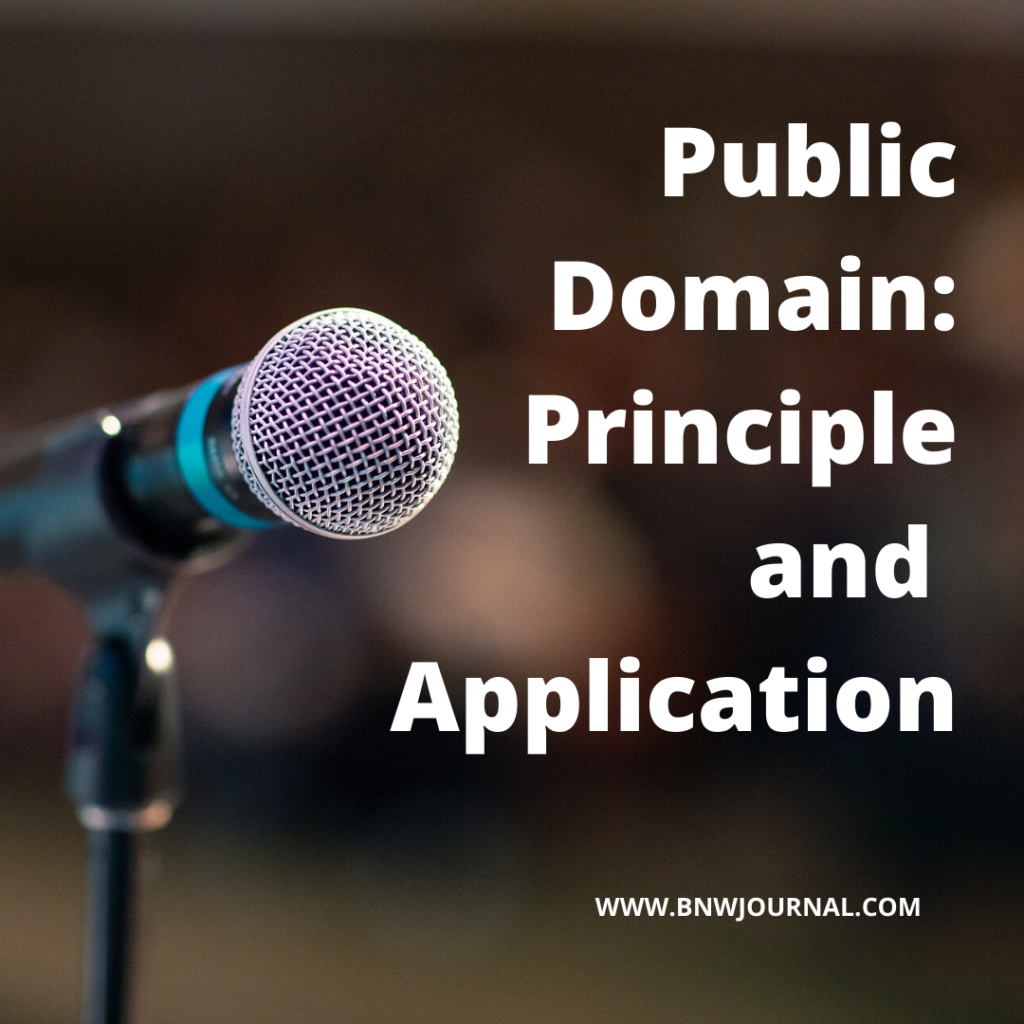![]()
Introduction
In India, the manifestations of innovative ideas can be protected under intellectual property laws like The Copyright Act 1957, Patents Act 1970, The Trade and Merchandise Act 1958, and so on. These creative works are protect to make sure that individuals can reap the benefits of their inventions. In turn encouraging research and development. In contrast with this, the public domain refers to those creative works which are freely available. They can be reproduce by the general public. Such work does not fall within the ambit of protection by the enacted laws. No creator can lay an exclusive claim on them as the rights have been relinquish. This could be because the rights of the creator have expire work does not classify to be protect under laws or the creator has actively dedicate his/her work to the public domain. The accessibility of public domain works differs from country to country.

For instance, based on its nature, the copyright of a work expires 60 years after the death of its author. And the work is subsequently accessible by the general public. Since the public owns these works, they can be use by anyone without obtaining a license or permission. However, if a person creatively combines some of the publicly available works, such a collection may be protected wholly.
Principle
Section 14(a) of the Copyrights Act, 1957 defines the exclusive rights of the copyright owner to reproduce the work or authorize another person to perform certain permissible actions like issuing copies, storing, translating et al. It also states that this right subsists “in respect of any work or any substantial part thereof”. Although one cannot claim infringement if the part is “insubstantial”. The determinants of “substantial part” can arrive at quantitatively as well as qualitatively.
Section 21 of the said Act tells about the procedure by which an author can relinquish the copyright of a particular work. Following which the work will be available in the public domain. A specific work that may be in the public domain in one country may not necessarily be in the others too.
As per Section 51(b)(4) of the Act, if any person imports such copies to India, the copyright shall be deemed to be infringed. Mala fide intention is not require to prove the infringement of copyright. However, an exception to this is provide according to the doctrine of fair use. If a person imports one copy of the work for the private or domestic use by the importer. It is not an infringement as it constitutes limited use of the material.
Under Section 52(1)(t), the making or publishing of a drawing, painting, photograph, or engraving of a sculpture permanently situated in public places is not an infringement of copyright.
Similarly, under Section 52(1)(u), the inclusion of such publicly accessible work in a cinematographic film does not constitute violation of copyright.
Application
The Indian courts have determine whether the work falls in public domain or it is protecte under the copyright law by applying various crucial principles.
Hon’ble Supreme Court in the case of Eastern Book Company v. D.B. Modak[1] laid down the tests of originality to determine if the copy-edited judgments of courts fell in the public domain under Section 52(1)(q) of the Copyrights Act. The issue of copyright has a close nexus to that of commercial viability and its implications. Derivative work can also be copyrightable depending on skill, creativity, and labour put in it. It is also decided by the amount of corrections done, value of improvements made and capital expend upon it. It was held by the Supreme Court that the literary merit of work created is not necessary. Rather, it has to be evaluated whether the labour, skill and the capital actually employed is trivial or negligible.
The court held that even though the judgments are in public domain, the copy-edited matter is protected under copyright law because it requires careful consideration, discernment, extensive reading, legal skill and minimum amount of creativity. Copyright of a work is not concerned with the originality of ideas, but with the originality in expression of thoughts.[2]
As regards to compilations, originality is the degree of skill, judgment or labour invoked in making it. This is also known as the “sweat of brow” doctrine. The trademarks and patents law is also analogous to this characteristic of public domain. Trademarks can lapse due to disuse, negligence, or widespread misuse and thereby enter the public domain. The Patents last for a limited span after which remain in public domain.[3]
In the US, there has been a glaring trend based on the “doctrine of modicum of creativity”. The US Supreme Court has also held that originality is a sine qua non for existence of copyrighted work.[4]
Thus, the work must be independently create by the author and must possess certain minimal degree of creativity. As opposed to this, the work protected by copyrights in UK[5] and India are protected on the basis of the “sweat of the brow” doctrine. A distinguishable variation in the work copied from the public domain will support a copyright. Nevertheless, there shall be a substantial variation and not a trivial one.
Conclusion-
The copyright law is concern with the originality of expressions engage by the author in drafting and arranging exercises that make the work unique. The creative works in public domain do not enjoy the copyrights and naturally there does not arise any question of their violation. The doctrine of fair use can be apply to cases that come within the domain of eventualities stipulated in the Section 52 of the Copyrights Act. Thus, all instances of fair dealings are exception grounds on access and affordability of subjects rootes in social, educational, economic and industrial considerations. In this era of globalization, the Intellectual Property Rights have gained momentum due to increase in exchange of ideas, cultures, values, innovations, etc.
On one hand, the awareness that protection of intellectual work is an inspirational factor behind such creations is growing. On the other hand, granting total protection to such works would be detrimental to the progress of humanity. The Copyright law strikes a balance between the interests of creators and that of the general public who seek to know information in good faith. The right equilibrium is to be maintain between the artistic integrity of creative works and the democratization of access to such works.
References:
[1]Eastern Book Company v. D.B. Modak, (2008) 1 SCC 1
[2] Ladbroke (Football) Ltd. v. Willim Hill (Football) Ltd., [1964] 1 WLR 273 (HL)
[3] The Syndicate case was a In the case of Syndicate of The Press of The Universtiy of Cambridge on Behalf of The Chancellor, Masters and School and Ors. v. B. D. Bhandari and Ors., 185 (2011) DLT 346
[4] Feist Publications Inc. v. Rural Telephone Service Co. Inc, 18 USPQ 2d. 1275
[5] University of London Press Limited v. University Tutorial Press Limited, [1916] 2 Ch 601



0 Comments